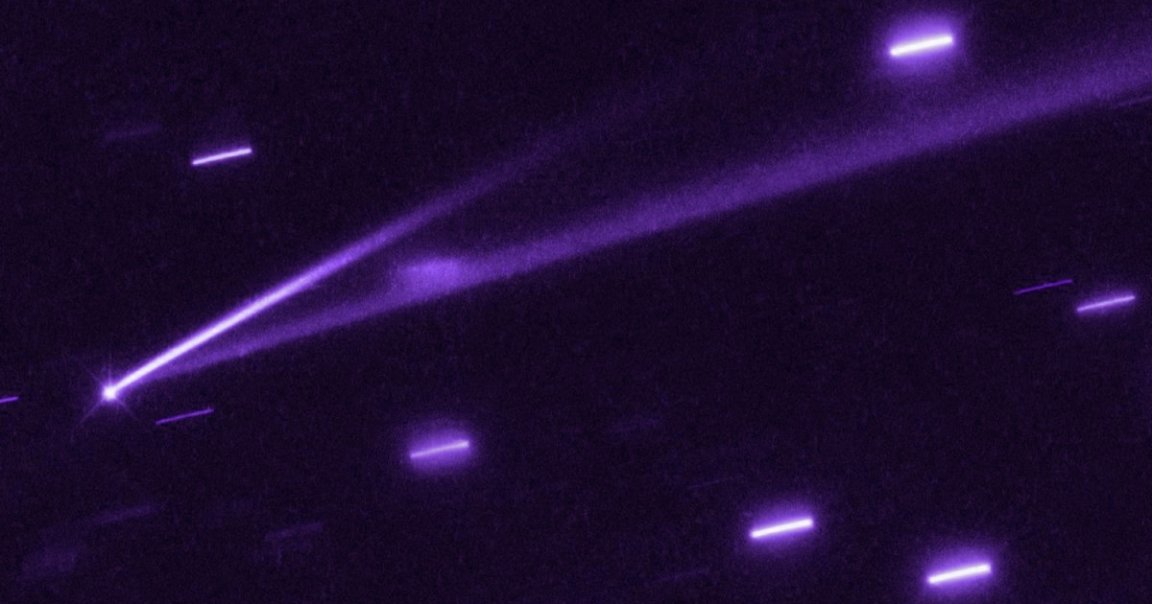
Cut My Life Into Pieces
A few months ago, astronomers noticed that a well-known asteroid that orbits the sun way out past Mars had sprouted a long, comet-like tail.
Now, data from the Hubble Telescope reveals that something has set 6478 Gault off kilter and it’s self-destructing, spinning itself into pieces.
“It could have been on the brink of instability for 10 million years,” University of Hawaii astronomer Jan Kleyna, who led the research into Gault’s new tail, said in a press release. “Even a tiny disturbance, like a small impact from a pebble, might have triggered the recent outbursts.”
This Is My Last Re-YORP
Scientists from NASA and the European Space Agency (ESA) suspect that Gault has fallen victim to the YORP effect, in which sunlight hitting the asteroid heats its surface, causing a shift in the asteroid’s momentum.
Sometimes, as the astronomers suspect is the case with Gault, this momentum can speed up the asteroid’s spin to the point that it begins to disintegrate. The long tail that appeared in January could be debris given off by a series of landslide as Gault began to spin faster.
While NASA and ESA scientists approximate that roughly one of the 800,000 asteroids orbiting between Mars and Jupiter goes through a so-called YORP disruption every year, being able to directly study the materials that Gault shreds off of itself could help astronomers better understand the history of our solar system.
Disintegration, Debrising
But the YORP effect may not spell doom for Gault. Insider reports that it’s certainly possible that 6478 Gault could disintegrate into nothing. But it’s also possible that the asteroid’s gravitational pull will manage to hold enough debris together that a new version of Gault is reborn.
“In all cases, this will release a lot of dust, which will be spectacular,” Olivier Hainaut, another astronomer who worked on the research, told Business Insider. “The radiation pressure from the sun will disperse the dust, leaving either the new Gault or the binary/multiple system behind.”
READ MORE: The Hubble telescope caught an asteroid ripping itself to pieces due to the ‘YORP effect’ [Insider]
More on Hubble: The Wounded Hubble Could be Back Soon, But It’s on Borrowed Time